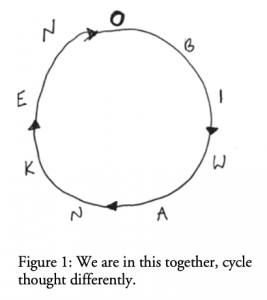BIO
Christina Gruber is a Vienna-based freshwater ecologist, visual artist, and sturgeon caretaker. She works at the intersection of art and science; her work deals with societal phenomena that shape our world. Gruber investigates the effects human activities have and had on the landscape and how they’ve shaped the Earth’s surface, specifically focusing on water. In the last years, water is of special interest to her. As it is the element that all things on Earth, including humans, have in common. Water is the connector between stories of different places and layers, running through everything, from clouds to data centres.
In 2018, she published the book From Mud To Outer Space, which navigates along large rivers exploring interspecies relationships, alternative forms of care, political resilience, and ecological pedagogy using speculative narration.
PROJECT DESCRIPTION
HOUSTON, CAN YOU HEAR ME? Species in alliance
This project seeks to develop a non-human approach, which uses technology to better understand our surroundings and the connection we have with the species around us. Houston can you hear me? stems from Christina Gruber’s recent research in the field of bioacoustics, which asks how sound recordings in river environments can contribute to transforming common sampling practices in fieldwork, which are usually based on a constant extraction of specimens from their environment.
As a freshwater ecologist, she sampled different rivers around the world for years using an energy-intensive method of sampling all the species involved and making a lot of noise because of the fossil fuel-powered engines that could be portable electric generators that she carried on her back or fixed to a boat.
At a residency in New Orleans, while investigating the relationship between the river and the community, Christina was confronted by the brutal reality of soil loss resulting from climate change, which is closely linked to the oil extraction industry. Realizing that she herself was contributing to this scenario, she began to look for ways to document, and later develop records and collect this land mass before it disappeared forever. Christina made her first hydrophone and travelled with different people in their boats along the deltas of the river to record the manifestations of a land which would soon cease to exist.
Since then Gruber has made a series of recordings and set up continuous recording units distributed along different rivers – these interventions have stimulated people’s curiosity and made them wonder about the origin of the sounds.
For her, the importance of this work is not related to the production of large quantities of additional data, and its collection, but rather to the approximation to another world, which is normally invisible to us due to the whirlwind of information and the need to focus on another sense, the hearing. It is an active test that demonstrates that we are not dependent on data and must return to experience as we are reaching the limit of data and predictions from models and systems used to predict the future.
Hearing like a fish means listening with your whole body, using this sense to navigate in space and sense our surroundings. Houston can you hear me? makes visible how important and crucial the issue of noise pollution is and how we have to develop a sound ecology so that we can resonate on this planet, together.
To see the microdoc of the residence click here.

Christina is a Biofriction artist in residence and takes part in several activities such as Biofriction Radio and the exhibition of Biofriction.
